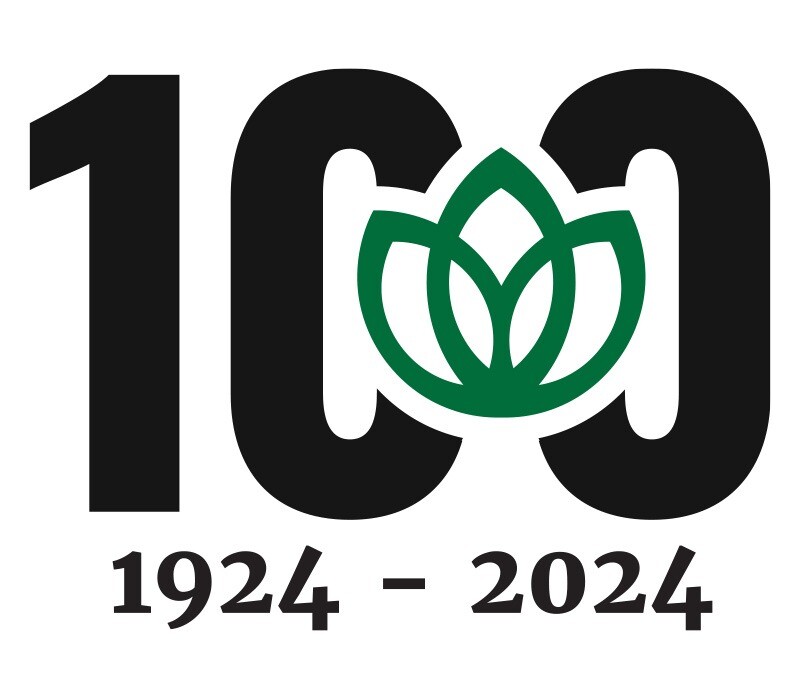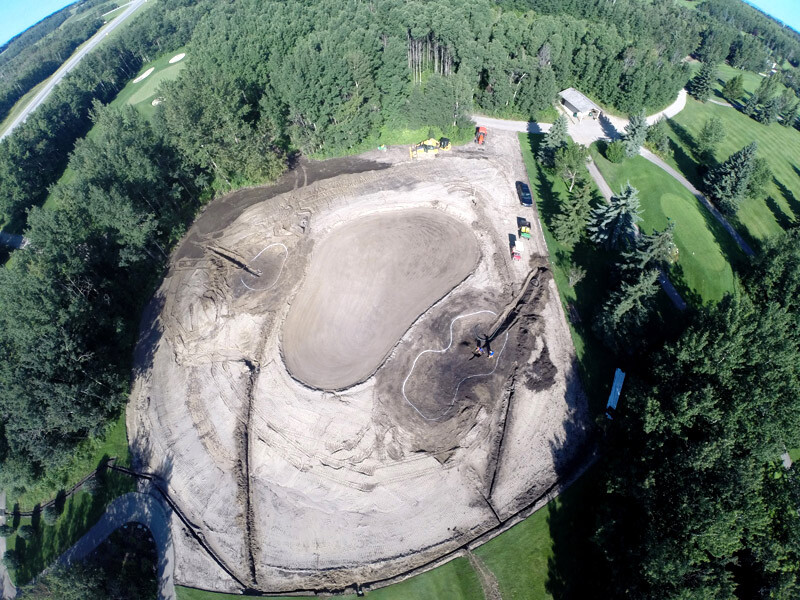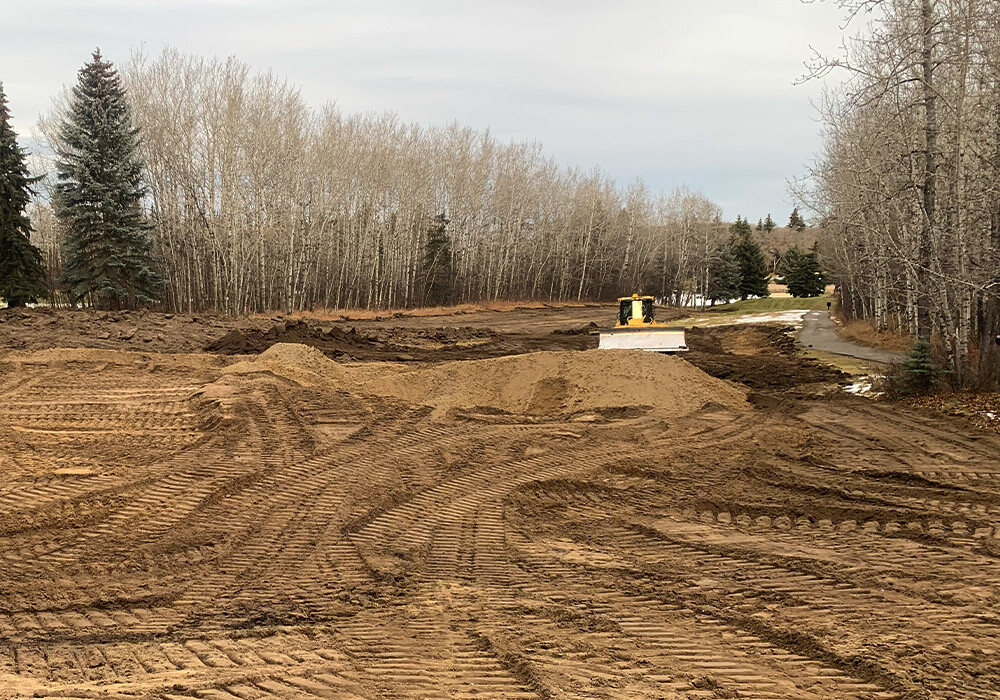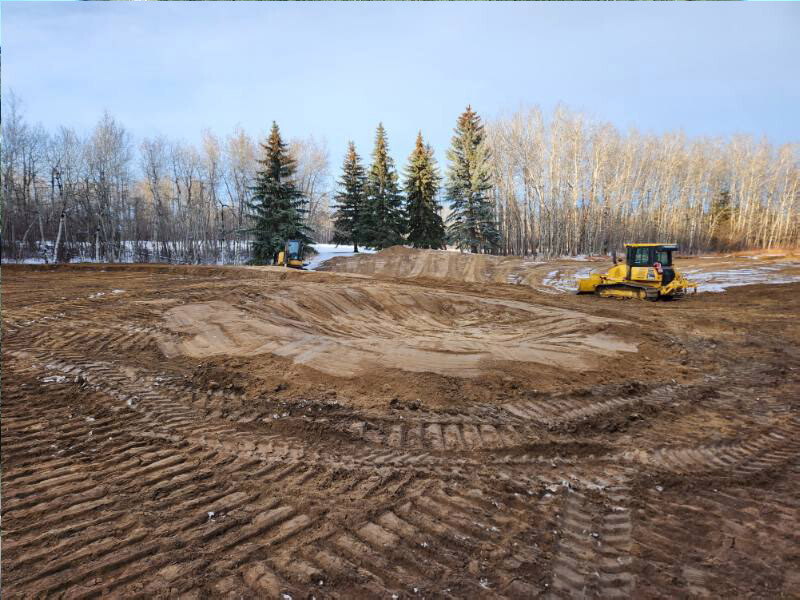Go Bigger!
Compiled by Dianne Finstad
Along with the mint conditions, another attraction of the Innisfail Golf Course has always been the setting and the design, which capitalizes on the natural landscape features. Those range from the scenic heights to the rolling greens, and even the famous ‘decision’ tree on Spruce 9 (will you aim right or left of it?).
Although course founders came up with the original nine layout, the fingerprint of well-known golf course architect Bill Robinson is very visible at IGC. IGC minute books show Cornish Robinson was hired as the course design firm for the expansion to 18 holes.
Who was Bill Robinson? An American who had designed numerous courses in the eastern U.S., as well as Canadian courses like Banff Springs (Tunnel Mountain 9), Eagle Ranch, and Gallagher’s Canyon. Numerous members recalled how Robinson loved the terrain at Innisfail and looked forward to the challenge of using the land to influence his course design.
Innisfail was able to connect to Robinson through board member (and president) Bob Newman, who’d gotten to know him personally.
Longtime Innisfail Golf Pro Jim Boomer called Robinson a ‘budget’ architect – he didn’t rule you out if you didn’t have a big budget. Past IGC General Manager Jim Romane added Robinson would come in and work with the ground no other architect would, and concurs Innisfail was always one of Robinson’s favourite course projects.
After the 18 holes were opened in 1987, it wasn’t long before Robinson was making a return trip to the Innisfail track.
You see, the good neighbors of the Innisfail Golf Course, the Stuarts, came knocking on IGC General Manager Jim Romane’s door, with an interesting proposal.
Ian Stuart asked Romane if the golf course would be interested in buying some adjacent land of his for future use. While it wasn’t in the planning or even dreaming stage yet for more expansion, there were implications to the course if the land went for development or other purposes. So despite his misgivings about the idea, Romane took the proposal to the board, along with the attractive terms Stuart had offered of buying it over ten years.
It was too good an opportunity to pass up, so the board decided to pursue it. Ultimately, the decision to buy was made by the shareholders. At the meeting, some suggested ‘cheaper land could be bought at Caroline’, to which member Joe Lehane replied drily,
“Well, that would be a long way to drive a golf cart between the nines.”
His humour still brings a chuckle as members recall the decision vote went in favour of the purchase. From there, the board diligently worked away at paying for the land. The agreement added nearly 70 acres, all treed, from three different quarters to get topography right for the course, with payments starting in 2001.
“We sat on it,” recalled Romane, about the extra land.
“We didn’t really get into what we were going to do with it. We wanted, number one, to protect ourselves from what was going to develop around us and number two the potential for expansion. He gave it to us at a good deal, over ten years. But it was kind of like holding wild horses, once you get the extra land. Everyone was asking ‘when are you going to build on it?’”“I knew right away as soon as you get that land sitting there, it’s always in the back of everybody’s mind that ‘we’ve got that land, we’ve got to do something with it’,” said Romane. “They knew I was skeptical of doing it, even though it looked good on paper. We were going through so much pressure, with the 18 holes and doing 300 rounds a day, 350 on weekends, you almost had to have a gunfight with members for tee times between 8 and 12 Sunday morning,” he chuckled.
Some thought becoming a 27-hole course would double profits, and while it wasn’t quite that lucrative in reality, Romane discovered in his research talking with other 27-hole courses, the number of rounds could be doubled, but it would require a full-time manager of the tee sheet to make it work, with the crossovers.
“It’s quite a chore to schedule it,”
Romane says. And maximize it! Members were getting frustrated about access with the growth of green fee players and the popularity of tournaments at Innisfail, so they let the board know loud and clear there was a need for more holes.
There was a distinct advantage the new land brought, from a design perspective.
“Of course, the land was very similar to what we had,” comments longtime IGC Pro Jim Boomer. “Lots of hills, contours, sandy, some trees – the personality of the golf course was going to be kept because that land was consistent. It wasn’t like we’d be building a third nine on a flat piece of land.”
So by 2003, Bill Robinson was commissioned to do a master plan for 27 holes. This time, Robinson only did two site visits, as he worked off hand drawings. Once after tree clearing, and then once when everything was ready to go. As his health was failing, his brother John helped, and it was to be Bill Robinson’s last work before his passing.
Even though members were pushing for more holes, the business of paying for them was still a challenge. Doug Bristow was on the board at the time, and he remembers the first proposal for 27 holes getting a chilly reception.
“We hadn’t really come forward with a budget and costing, so members ‘ate our lunch’,” he admitted.
The board went back and did the homework before presenting again to the membership.
“The next meeting went way better,” says Bristow.
The budget was approved in October of 2004, and it was go-time.
Once again, the Club tapped into local resources, to make the process as cost-efficient as possible. For instance, they were able to use some surplus equipment from Bristow Projects, and some available operators. However, they were more used to making nice straight right-of-ways, so had to be convinced of the merits of making cuts in the hills and the contours necessary for a golf course!
IGC Superintendent at the time, Dwayne Simpson was instrumental in directing the project, and he notes Bill Miller’s firm did the shaping for the expansion, while another local firm, Howell’s Excavation did the heavier dirt moving and tree clearing. Simpson and his crew also managed to save the course a lot by doing a lot of the finishing work ‘in-house’.
However, another share issue of 50 was created to help finance the project. Previous shares were limited to purchasers being residents of the Innisfail community with Red Deer County boundaries, excluding the City of Red Deer. But the special issue of 50 could be beyond the boundaries, to Red Deer, and even had some interest from Calgary residents. The effort raised $250 thousand.
And so it was, with hard work, good planning, financial prudence and volunteer vision that the third nine of the Innisfail Golf Course officially opened May 27, 2006, less than two decades after the move from nine to eighteen holes.



